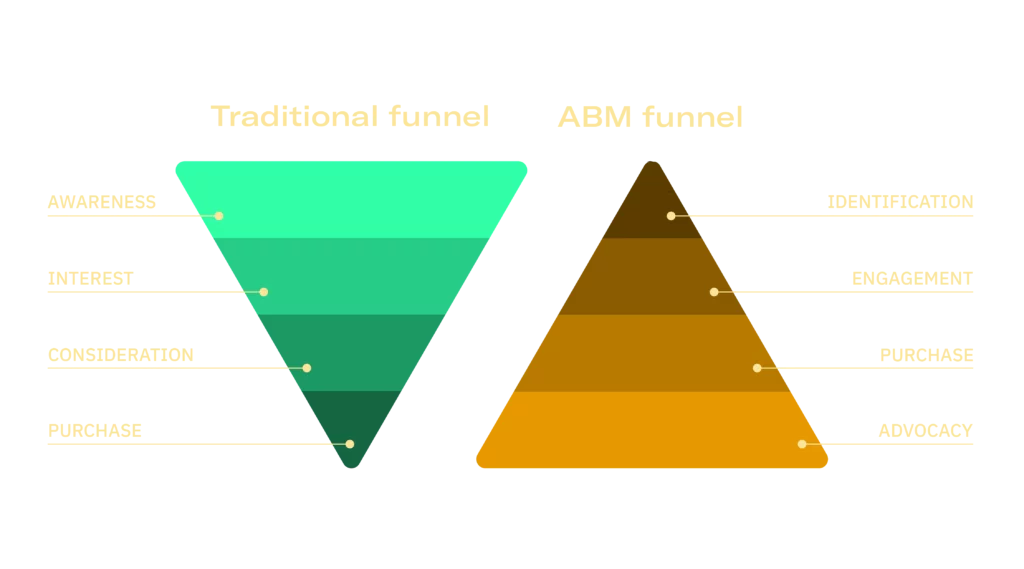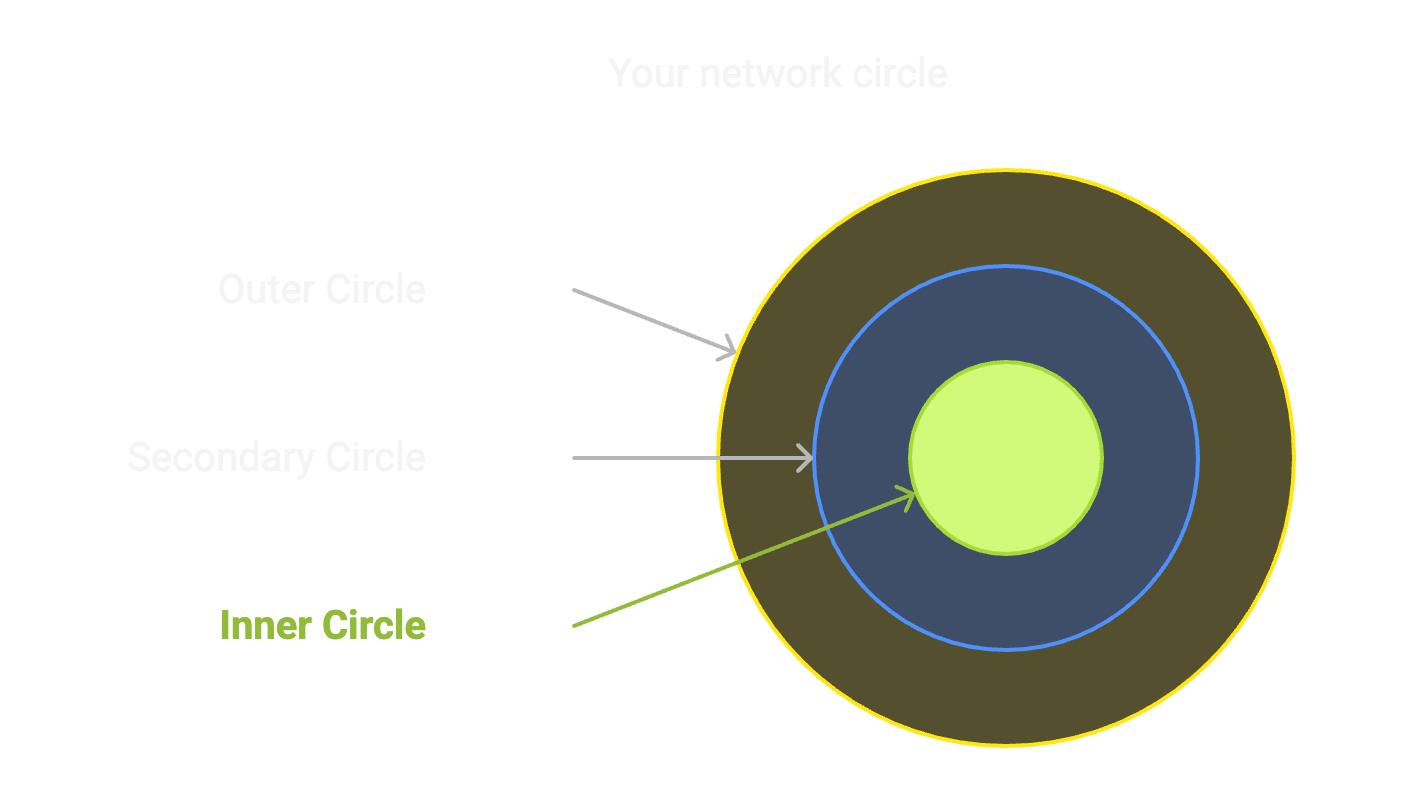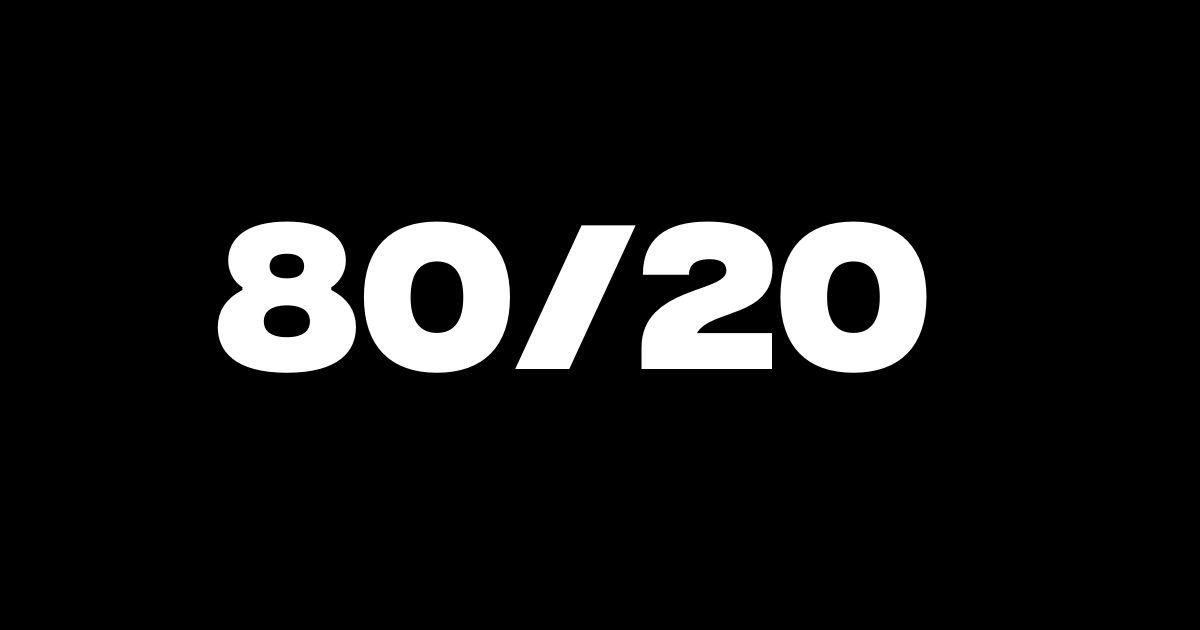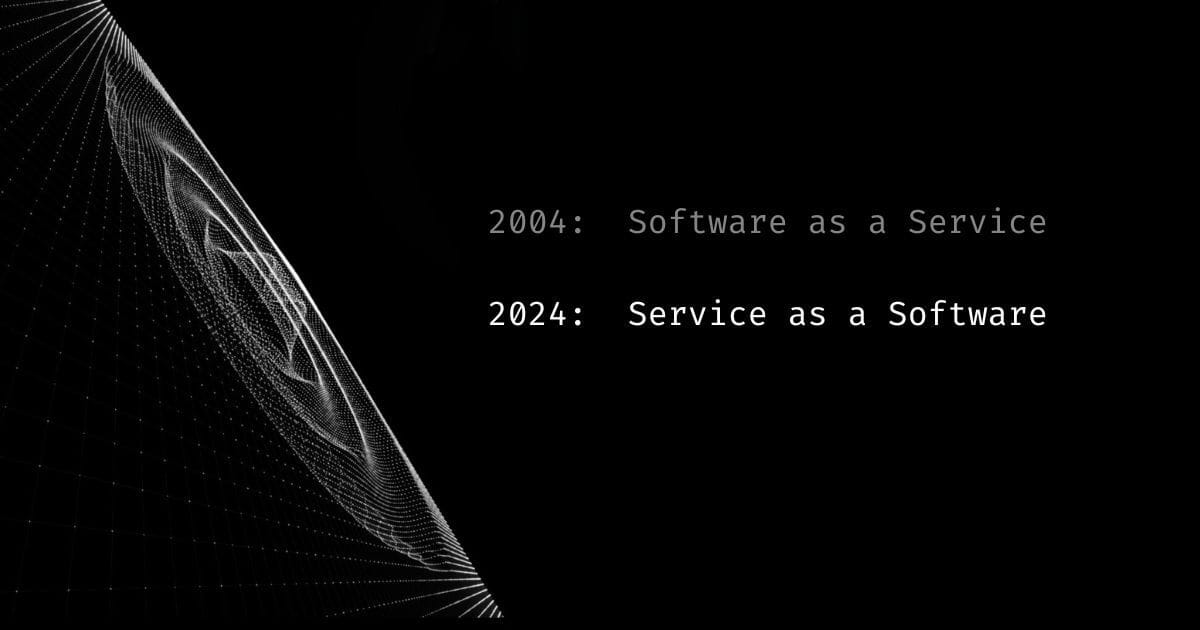Scaling a SaaS business is often a complex, messy process. But if we break it down using simple, structured principles, we can create a framework that helps founders and growth teams prioritize the right strategies—without getting lost in the noise.
Most SaaS companies waste time and resources chasing the wrong customers, relying on broad, inefficient acquisition tactics, and failing to maximize expansion opportunities. By applying the 80/20 principle in a coordinated, account-focused approach, you can unlock sustainable growth without burning through your team or budget.
The Sales Triangle: 80/20 and Why Your Best Customers Matter Most
Not all customers are created equal. In SaaS, a small percentage of accounts generate the majority of revenue. This reflects the Pareto Principle (80/20 rule):

- 20% of your customers generate 80% of your revenue.
- The other 80% contribute far less and often require more effort.
This is where an Account-Based approach can be useful. It unifies ideas from traditional Account-Based Marketing (ABM) and Person-Based Marketing (PBM) into a single framework:
- Identify high-value accounts based on real data (e.g., ICP fit, usage potential, market segment)
- Engage with multiple stakeholders within each account (since B2B decisions often involve several decision-makers)
- Building personalized outreach and relationships that speak to specific business needs, rather than relying on broad, one-size-fits-all campaigns
If you’re spreading your resources too thin, chasing small customers who churn quickly, you’ll never build a scalable SaaS business.
To avoid unnecessary marketing jargon, in ABM you identify a few key accounts that are likely to become your customer and then you work on converting them. (Most companies limit this to 1,000 key accounts)

The 80/20 Sales Triangle: Practical Advice
1) Do a Quick Revenue Audit
Review your customer list and see who contributes the highest percentage of revenue (often 20% of your customers = 80% of your revenue). If you haven’t done so, run a quick “top customers” report in your CRM.
2) Get Personal With High-Value Accounts
Devote extra time to building relationships with your key SaaS customers—the ones who consistently renew or buy upgrades.
3) Don’t Rely on Mass Outreach Alone
Sending generic campaigns to all your leads will miss the mark for high-value customers who expect a more tailored approach.
The Network Circle: How Warm Connections Accelerate SaaS Growth
In SaaS, it’s easy to fall into the trap of endless cold outreach. While cold tactics can work, they’re far more expensive and time-intensive than tapping into warm connections within your existing network. Think of your network as concentric circles, with you and your closest collaborators (co-founders, team members, advisors, loyal customers) at the center.

- Inner Circle: This includes your immediate team and top customers—people who already believe in your product and may be willing to introduce you to potential buyers.
- Secondary Circle: Partners, vendors, and friendly investors, plus customers who are happy with your product but haven’t yet spread the word.
- Outer Circle: Prospects and referral targets who aren’t currently aware of your product but are accessible through mutual connections.
The Network Circle: Practical Advice
For SaaS founders, leveraging these circles is crucial:
1) Map Your Inner Circle First
Begin with your co-founders, team members, advisors, and loyal customers. Ask them who they know that fits your ideal customer profile—these warm introductions often convert faster.
2) Reach the Outer Circles via Referrals
You might have big-name prospects who seem unattainable. Check if anyone in your extended network (partners, existing customers, LinkedIn connections) has a direct link. A warm referral is infinitely more powerful than cold outreach.
3) Use Concentric Strategies
For SaaS, progress outward methodically: start with your immediate supporters, move to their networks, then to “friends of friends,” and only then consider broad, cold prospecting.
Rather than relying on mass outreach, ask yourself:
- Who in my network can introduce me to my ideal customers?
- Which current customers can refer similar businesses to us?
- How can I leverage partnerships to get in front of the right people?
This is why this method is so effective, it allows you to go directly after the highest-value customers instead of waiting for them to come to you.
The Revenue Pie: Balancing Acquisition, Retention, and Expansion
Most SaaS teams focus almost entirely on new customer acquisition, but that’s just one piece of the revenue puzzle. Imagine your revenue broken into three major slices:
- Acquisition: Adding net-new customers
- Expansion: Upselling and cross-selling to existing customers
- Retention: Keeping current customers happy so they renew year after year
Neglecting expansion and retention is a common mistake—one that often stalls growth. Acquiring new accounts is more expensive and time-consuming than growing existing customer relationships. By combining your Account-Based approach with strong onboarding, you can create a feedback loop that drives expansion revenue and retention without having to constantly chase new leads.
- Expansion: Identify power users or teams within a customer’s organization that haven’t adopted your product yet. Tailor your outreach with relevant use cases and ROI data.
- Retention: Proactively engage existing customers with training, support, and product roadmaps. The more they feel heard and supported, the more likely they are to stay—and champion your product internally.
Balancing these three slices of the revenue pie prevents overreliance on big, sporadic deals and helps create a sustainable growth engine, ensuring your SaaS grows through both net-new customers and deeper, more profitable relationships with the ones you already have.
The Revenue Pie: Practical Advice
1) Acquisition vs. Expansion
Don’t focus solely on acquiring net-new logos—make sure you have a plan for upselling and retaining existing accounts.
2) Build a Roadmap for Each Account
Identify how each of your key customers could grow within your product. Offer add-ons, expansions, or seat-based upgrades.
3) Monitor Customer Health
In SaaS, churn from a top customer is just as damaging. Keep an eye on usage, support tickets, and success metrics so you can fix issues proactively.
Essential Strategies & Tactics to Amplify the 80/20 Approach
Bringing together the 80/20 principle, network-driven sales, and a balanced revenue pie requires tactics that maximize ROI and minimize wasted effort. Here are some proven moves to consider:
- Custom Outreach to High-Value Accounts
- Hyper-Personalized Emails: Demonstrate clear understanding of a prospect’s business challenge.
- Targeted Ads: Reinforce brand recognition for decision-makers at key accounts.
- One-on-One Demos: Offer in-depth product sessions tailored to each stakeholder’s concerns.
- Strategic Partnerships
- Co-Marketing: Collaborate on webinars, blog posts, or newsletters that reach each other’s audiences.
- Referral Agreements: Offer revenue share or perks when partners introduce you to qualified leads.
- Ecosystem Integration: Integrate your product with complementary tools, tapping into each other’s user bases.
- Upsells, Cross-Sells, and Feature Add-Ons
- Identify Gaps: Use customer usage data to pinpoint features or modules they haven’t adopted yet.
- Bundle & Tier: Create value-added bundles that encourage upgrading to higher tiers.
- Feedback-Driven Development: Turn common customer requests into premium features.
- Referral Loops & Customer Advocacy
- Formal Referral Programs: Provide incentives (discounts, cash, or extended feature sets) for introducing new customers.
- Ambassador Groups: Invite engaged users to exclusive communities, events, or beta tests in exchange for evangelizing.
- Social Proof & Testimonials: Encourage happy customers to share success stories on review sites and social media.
These tactics align with an account-focused philosophy: rather than spreading resources thin across the entire market, they strategically zero in on the relationships, partnerships, and expansions that make the biggest difference to your SaaS growth.
Conclusion: Stop Wasting Time on Low-Value Leads
Scaling your SaaS isn’t about casting the widest net possible. It’s about finding the specific fish—customers and partners—that yield the biggest returns. By merging the 80/20 rule with an account-based approach, leveraging your network circles, and balancing acquisition, expansion, and retention, you create a structure that fuels growth from every angle.
In other words, it’s not about how many leads you generate—it’s about generating the right leads. Concentrate your efforts on the accounts most likely to deliver long-term value, deepen relationships with your current customer base, and let your product speak for itself through referrals and testimonials. When done right, each of these layers reinforces the others, resulting in a repeatable, scalable framework for SaaS success.
This is how SaaS companies grow without endlessly burning money on acquisition.





